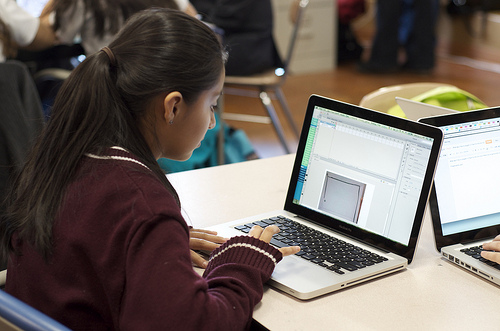- Subject:
- English Language Arts
- Material Type:
- Lesson Plan
- Level:
- High School
- Grade:
- 11
- Provider:
- Pearson
- Tags:
- License:
- Creative Commons Attribution Non-Commercial
- Language:
- English
Thesis Development

Overview
In this lesson, students will work on their literary analysis paper, focusing on the thesis. They will also spend time on their group research project.
Preparation
- Read the lesson and student content.
- Anticipate student difficulties and identify the differentiation options you will choose for working with your students.
- Decide how you will have students share their ideas, questions, and comments in Tasks 3 and 4.
Group Project Check-In
- Students should return to the project groups.
- If appropriate, allow groups to plan and organize their use of class time. Let students know that presentations will be during Lesson 25 and will be in chronological order.
Opening
Report back to your group on your homework.
- Were you able to complete the work assigned to you?
- What problems did you face?
- How can you and your group resolve any problems or difficulties?
Short Story Share
- If possible, find a way for students to share their thoughts in a central location.
Work Time
Share your thoughts on the second short story you read for homework.
- Review each of the questions you answered in the previous lesson, about the second short story, with your classmates:
- Who is the protagonist?
- What is the setting?
- Who is the author? What do you know about him or her?
- Does the biographical information about the author contribute at all to your understanding of the story?
- What theme or themes emerges from your reading of the story?
- Can you connect this theme to any of the works you have read in this unit? Any of the works in your project?
Thesis Development
- SWD: Some students may benefit from using a Venn diagram to graphically organize the similarities and differences between their two stories. If time allows, you can demonstrate how this would work for the class.
- The questioning strategy works best when students are encouraged to answer one question by developing another one. They should narrow down their ideas from a broad question (e.g., “What are these authors trying to say about America?”) to a more focused question (e.g., “How does the author use descriptions of the landscape to express the main characters' shared sense of isolation?”).
- Display or project the following qualities of a critical question for thesis generation:
- ✓ These questions should be open-ended.
- ✓ It should be possible to answer the question in one sentence.
- If feasible, provide a central location where students can share ideas and questions. If Internet access is not available, a whiteboard would work.
Work Time
Before you continue working, revisit the strategies you used to develop the thesis for your first paper in this unit, in Lesson 10.
When you have finished, make notes on the following questions.
- What do the story you read for homework and the story you read in class have in common?
- What commonalities among stories might you explore in your paper?
- What questions do you have that might help you generate a meaningful thesis? Write at least four questions.
Open Notebook
It might be helpful to review the assignment and your Independent Reading Journal to help you stay on track during this process.
Response to Peer Questions
- If Internet access is not available, put students in small groups and have them share digitally, trade tablets, or use some other method so they can comment on each other's questions.
- Make sure each student receives a few substantive responses from peers.
- ELL: This task can be a good opportunity to check in with these students and review the responses that they’ve received.
Work Time
Share the questions you developed in the previous task.
- Follow your teacher’s instructions to respond to at least four of your classmates’ questions.
You will have at least four responses to your questions by the end of this task.
Project Homework Assignment
- Check in with each group to make sure everyone is clear on their assignment.
Closing
Assign homework for each member of your group.
- What still needs to be done?
- What will each person do to prepare for the next lesson?
Open Notebook
Independent Project Work
- Remind students that presentations will take place in a couple of lessons.
- Also, remind students to continue their Independent Reading and to continue filling out the Independent Reading Journal they began in Lesson 16, Task 6.
Homework
- Complete the work assigned by your group.
Continue working on your Independent Reading Journal.